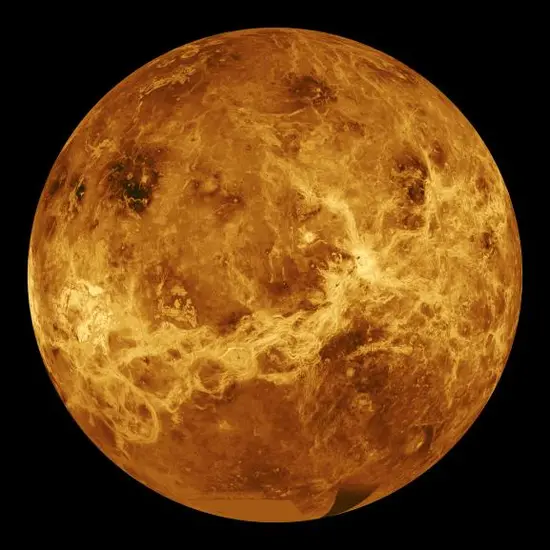
How the Rocky Planets Got Their Shapes
Jul 14, 2022
When studying rocky planets—Mercury, Venus, Earth, and Mars—you can see their history, literally. Their geological history is preserved on their surfaces. Their landscapes reveal the processes that shaped them: impacts, crustal movements, volcanic activity, and erosion. Gravity, temperature, air, and water all play leading roles in their geological stories. Join us in taking a closer look at how these planets took shape.
Impact
Planets and moons across our solar system bear the scars of collisions. Impact craters form on their surfaces when another object, such as a dust particle, rock, asteroid, or comet smashes into them. Scientists often use the number of impact craters on a planet’s surface as a proxy for the relative age of that surface (more craters = older). Impact craters come in all sizes and shapes, depending on the impacting object size, impact angle, and surface into which the object crashes. Craters range in size from microscopic—smaller than the width of a human hair (100 microns, or .0001 meter)—to as wide as the continental United States.
Craters from impact take different shapes—some simple, some complex.
Tectonics
Rocky worlds can also reshape themselves from internal forces that push and pull at their crustal materials, a process called tectonics. Contractional forces shove crustal material together to create cliff-like fault scarps, ridges, and mountains. Extensional forces stretch and pull the crust apart to form trough sand rift valleys. While impacts are sudden events, tectonic forces operate over long periods of time. The landforms they create can take millions of years to form.
One of the things that makes Earth unique from the other rocky planets is that its’s “outer shell”—its crust and upper mantle, called the lithosphere—is broken into a mosaic of about 12 plates. They move around and forcibly interact with each other. On Earth, most tectonic landforms are created by the forces that move these tectonic plates.
The other rocky planets seem to have unbroken (one-plate) outer shells. What the rocky planets do all have in common is that there are hot interior cores surrounded by hot mantles. As its interior cools, a planet shrinks. On the planets with continuous lithospheres (outer shells) this causes its crust to wrinkle.
Although it is the smallest planet, Mercury has some of the largest fault scarps in our solar system. The shrinking of its interior has forced its single - plate surface to contract, creating fault scarps all over the planet. The largest is 620 miles (1,000 kilometers) long, about the size of California’s San Andreas Fault. Image courtesy of NASA.
Volcanism
One way rocky worlds release interior heat is through volcanic activity. This can involve molten rock, or magma, being forced into the crust. The magma may erupt onto the surface to become lava. Scientists have found evidence of volcanic activity on all the rocky planets.
Volcanism creates a variety of landforms, not just volcanoes, depending on the properties of the lava (such as viscosity and composition) and on the planetary environment (like gravity and presence of an atmosphere).
Erosion
Gravity, wind, water, ice: all these factors help break down solid rock and scatter the pieces. Wind and water transport dust and sand. Gravity and glacial activity can move large pieces of rock and ice. Erosion wears down land forms, but it also creates new ones. Planets with and without atmospheres experience erosion, but by different geologic processes. On Earth and Mars, water and wind, respectively, are the main agents of erosion. On Mercury, a world without wind or liquid water, impact cratering erodes the landscape.
Impacts, crustal movements, volcanic activity, and erosion: all these contribute to the unique surfaces of the rocky planets of our solar system—surfaces that are shaped by the planets geological history.
This story was adapted from the Kenneth C. Griffin Exploring the Planets Gallery.
Related Topics
You may also like

We rely on the generous support of donors, sponsors, members, and other benefactors to share the history and impact of aviation and spaceflight, educate the public, and inspire future generations. With your help, we can continue to preserve and safeguard the world’s most comprehensive collection of artifacts representing the great achievements of flight and space exploration.
Support the Museum
We rely on the generous support of donors, sponsors, members, and other benefactors to share the history and impact of aviation and spaceflight, educate the public, and inspire future generations. With your help, we can continue to preserve and safeguard the world’s most comprehensive collection of artifacts representing the great achievements of flight and space exploration.



























